More Innovation:
5G Towers in Canada: Is there a Health Concern?
Updated: January 31, 2022
5G Towers In Canada: Is There a Health Concern?
The fifth generation of high-frequency radio airwaves is already implemented in certain areas across Canada, with median download speeds up to 169.46 Mbps – 205% faster than 4G download speeds! 5G will allow hundreds of new transformative technologies to become real, such as autonomous vehicles, mass IoT deployments, and augmented reality. 5G will optimize all industries, bringing an expected improvement to GDP by $40 Billion and adding 250,000 jobs to the Canadian economy by 2026.
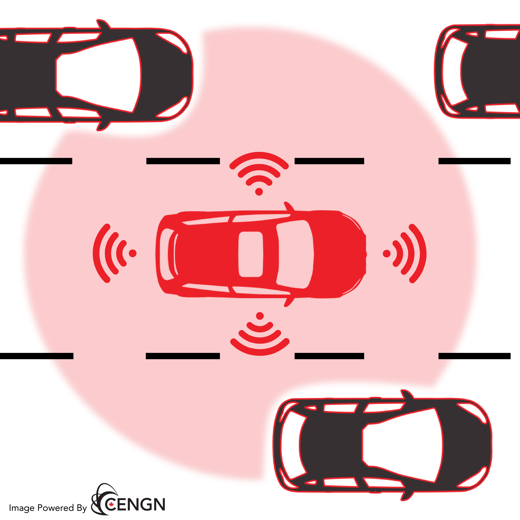
The deployment of 5G will be the next giant leap in technology, changing how we live and function as human beings since the dawn of the internet.
With 5G deployed, health workers and emergency services would benefit human health by enabling faster transfers of large image files, telemedicine, real-time monitoring, and much more.
Yet, some fear 5G in Canada and globally, citing potential health concerns such as Electromagnetic Hypersensitivity (EHS).
Find out more about EHS in our blog “Electromagnetic Hypersensitivity (EHS): Is it a Threat to 5G?”
Because of this, individuals have been boycotting the placements of 5G towers. Some have even attempted to damage critical telecommunications infrastructure, with incidents globally, including countries like the United States, the United Kingdom, and Canada.
So, where does this hysteria come from? Why do some people believe that 5G is a health concern?
To find out, let’s start looking at the different types of 5G towers and what they do.
5G Towers
5G towers receive and transmit radio signals to devices and other cell towers. 5G towers (called small cell towers) are often smaller than previous 4G towers and range from 7 to 12 meters high.
Small cell 5G towers send and receive high-speed data to cell phones and other devices within short distances. On the small cell towers are the actual small cell devices. These devices are about the size of a pizza box and deliver data within a specific area. Small cell devices are also placed on streetlights or electric poles in condensed areas.
Larger towers called “macrocells” stand between 15 to 60 meters high. These towers often use 4G LTE technology and assist in sending low-frequency signals. Macrocell towers are base stations that collect and transmit data at longer ranges to the small 5G towers, sending signals to items such as your cell phone.
Compared to 4G, these new signals provide much faster download speeds.
5G Vs. 4G
What makes 5G download speeds faster than 4G is the number of radio frequencies coming from 5G towers.
To increase the frequencies of the radio waves, 5G networks operate at a higher frequency between 30 GHz to 300 GHz than 4G with a frequency of about 6 GHz.
(*GHz is a unit of measurement for alternating current (AC) or radio wave frequencies.)
As a result of the higher frequency, there is a reduced range and penetrability of radio waves coming from 5G towers.
Simply put, 4G towers operate at an average range of about 20km, whereas 5G towers only operate at a range of 305m. This is a considerable reduction, limiting the scope of 5G towers by about 98.5%. 5G small cell towers aren’t as noticeable compared to traditional 4G towers.
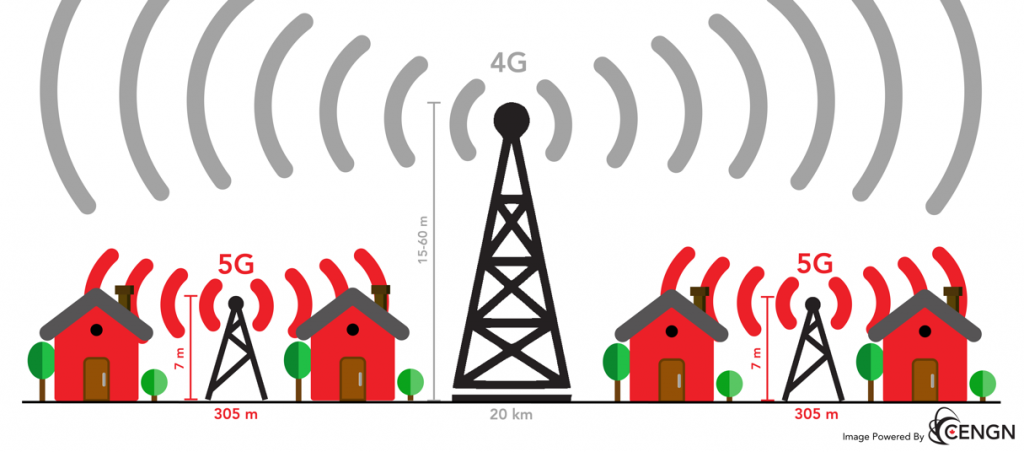
This is where false health considerations arise.
To figure out if these higher frequency radio waves are harmful or not, we need to look at the electromagnetic spectrum.
Measuring and Comparing Frequencies
The electromagnetic spectrum is a measurement system used in physics to visualize the entire range of electromagnetic radiation frequencies. The tool highlights the specific number of frequencies that elements and objects emit.
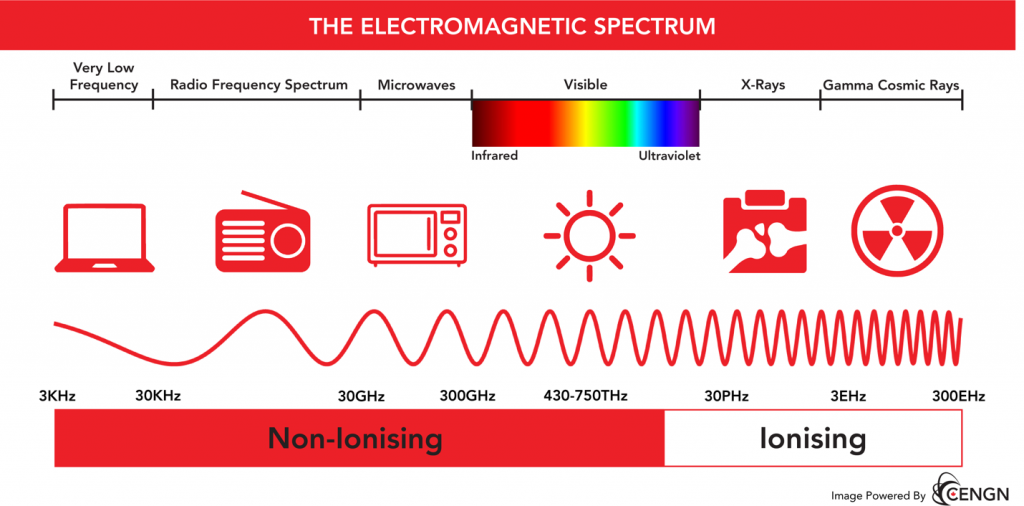
What makes some radio frequencies more dangerous than others is whether it’s ionizing or not. When ionized atoms come in contact with living tissue, it rips the cells apart, causing radiation burns, cell damage, sickness, cancer and even death in some cases.
But there’s no reason to worry because 5G isn’t ionizing.
5G creates between 30 GHz and 300 GHz worth of radio waves. Although the waves extend up to 300GHz, only waves up to 100GHz are used for 5G deployments.
On the electromagnetic spectrum, 5G creates non-ionizing energy, and the radio wave frequencies are between 2567 and 14,333 times less potent than the power we receive from the sun.
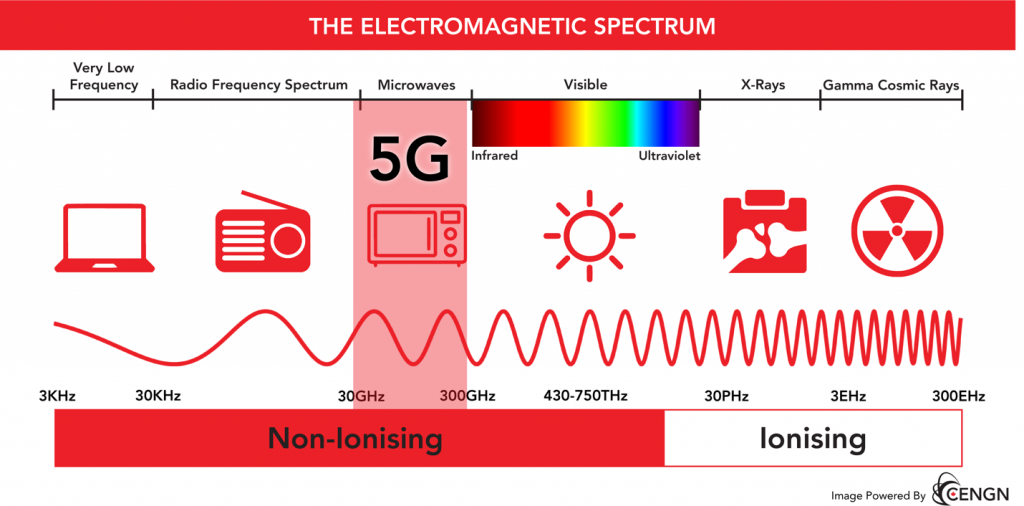
Yet, there’s another problem.
Above, you may have noticed that 5G and microwaves sit on the same range of frequencies.
So, if 5G puts out the same frequencies as a microwave to cook food, isn’t it just as dangerous?
5G, Your WiFi Router, and Microwaves
Compared to more powerful microwaves mentioned on the electromagnetic spectrum, the average consumer-grade microwave produces about 2.45 GHz of radio waves. This is much lower than 5G’s highest frequency setting at 300 GHz. In fact, your microwave’s frequency is nearly similar to your WiFi router at home.
Looking at that statement, you may think if your WiFi router produces the same radio waves as a microwave, it’s got to be dangerous.
Luckily, that’s not true.
It’s not just your microwave’s radio frequencies that cook your food; it’s the power (wattage), and where that energy is focused, that’s important as well.
The average power a consumer-grade microwave produces is between 500-1000 watts, a significant difference from your WiFi router producing 0.1 watts. A 5G tower also creates less wattage than a microwave ranging between 0.25 watts to 120 watts.
Where that power is focused is essential too.
Your microwave focuses that energy in a confined area – the centre of your oven. As those high-powered frequencies hit the centre and bounce off the walls in your microwave, they cook your food.
However, WiFi routers and 5G towers disperse those low-powered frequencies in every direction as far as they can reach.
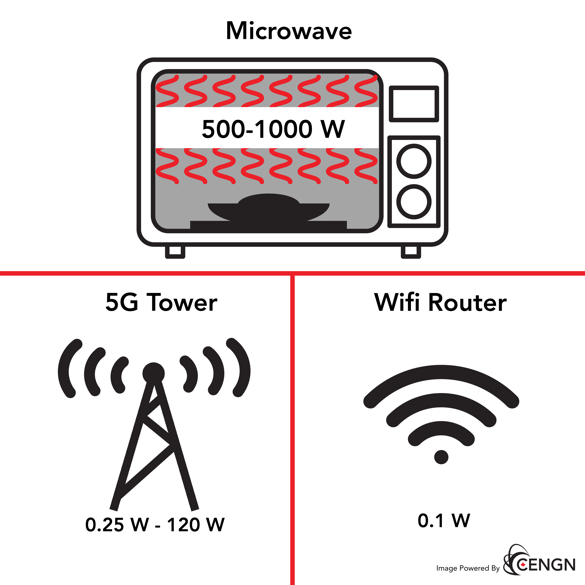
Not the First Fear of New Technology in Canada and the World
As much as people are worried about 5G in Canada and around the world, this isn’t the first time a new technology has gotten a backlash from the public. These situations have happened time after time throughout human history.
Just over 100 years ago, automobiles were targeted by the public. During that time, some people classified cars as ferocious animals terrorizing the streets. Even the media portrayed cars as “Terror Wagons” or “Instruments of Death.”
However, as we know today, cars play a significant role in the economic, social, and industrial growth of almost any country on earth. We’re now even going as far as electric cars and autonomous vehicles.
Another great example was the creation of street lighting during the late 1800s, which caused the public to fear for their health.
Concerned that streetlights would throw off people’s ability to tell the difference between day and night, they believed that this lighting would cause people to ruin their sleep cycles. And due to this lack of sleep, riots and chaos would happen in urbanized areas.
This fear got so intense that the public banned streetlights in some areas worldwide, including the Vatican.
Based on our past adaptation to new technologies, it’s natural for humans to be suspicious of change.
But, as technology innovators, it’s part of our job to reduce these suspicions by looking at the facts and educating others on the benefits of embracing new technology.
Along with that, 5G standards have already been set in place to protect citizens across the world.
5G Towers In Canada: Health Standards
The International Telecommunication Union (ITU) governs and sets the standards for all radio emissions globally. As a United Nations specialized agency, the ITU’s responsibility is to handle issues regarding communication technologies. It’s also under their guidelines that the International Commission of Non-Ionizing Radiation Protection (ICNIRP) and 5G in Canada, more specifically, is implemented and enforced by Safety Code 6.
Designed by Health Canada, Safety Code 6 sets the safety limits to protect Canadians from exposures to radiofrequency electromagnetic fields. Wireless devices such as 5G towers are strictly followed and need to comply with these guidelines regulated by Industry Canada.
5G for Better Health
If anything, 5G will enhance our current Canadian healthcare technologies allowing doctors, physicians, nurses and more healthcare workers to provide better services.
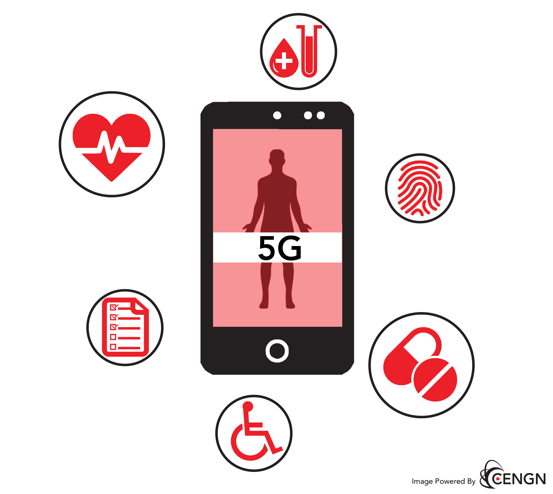
With 5G in Canada, we shouldn’t be fearful like our past ancestors as professionals are well aware of the technology and are taking the proper steps to ensure safety. Canadians shouldn’t be worried. Instead, we should embrace the innovations 5G will bring us and work to enable all the new opportunities the enhanced connectivity offers.
Are you interested in hearing more about 5G and other innovative technologies?
Download our “Next Generation Network Imperative” Whitepaper to find out what the future of next-generation technologies looks like.
The International Data Corporation (IDC), a world-renowned global market intelligence firm, was commissioned to complete this study.









